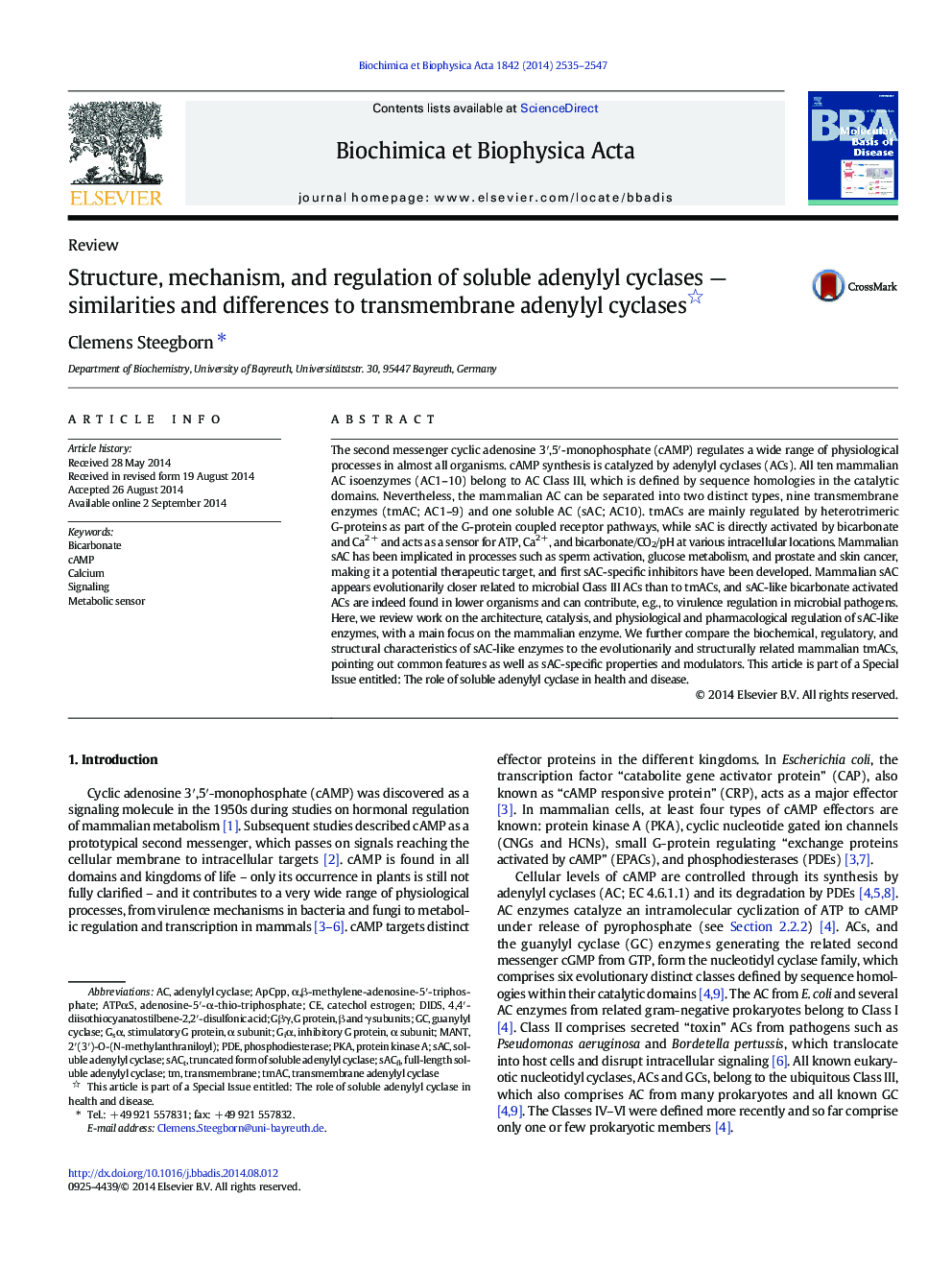| Article ID | Journal | Published Year | Pages | File Type |
|---|---|---|---|---|
| 1904630 | Biochimica et Biophysica Acta (BBA) - Molecular Basis of Disease | 2014 | 13 Pages |
•Soluble adenylyl cyclase (sAC) is an intracellular bicarbonate and calcium sensor.•sAC enzymes exist from archea to mammals and are related to transmembrane cyclases.•We describe domain architecture, structure, and catalytic mechanism of sAC enzymes.•sAC and transmembrane enzymes are highly similar in overall structure and catalysis.•sAC and membrane cyclases differ in physiological and pharmacological regulation.
The second messenger cyclic adenosine 3′,5′-monophosphate (cAMP) regulates a wide range of physiological processes in almost all organisms. cAMP synthesis is catalyzed by adenylyl cyclases (ACs). All ten mammalian AC isoenzymes (AC1–10) belong to AC Class III, which is defined by sequence homologies in the catalytic domains. Nevertheless, the mammalian AC can be separated into two distinct types, nine transmembrane enzymes (tmAC; AC1–9) and one soluble AC (sAC; AC10). tmACs are mainly regulated by heterotrimeric G-proteins as part of the G-protein coupled receptor pathways, while sAC is directly activated by bicarbonate and Ca2 + and acts as a sensor for ATP, Ca2 +, and bicarbonate/CO2/pH at various intracellular locations. Mammalian sAC has been implicated in processes such as sperm activation, glucose metabolism, and prostate and skin cancer, making it a potential therapeutic target, and first sAC-specific inhibitors have been developed. Mammalian sAC appears evolutionarily closer related to microbial Class III ACs than to tmACs, and sAC-like bicarbonate activated ACs are indeed found in lower organisms and can contribute, e.g., to virulence regulation in microbial pathogens. Here, we review work on the architecture, catalysis, and physiological and pharmacological regulation of sAC-like enzymes, with a main focus on the mammalian enzyme. We further compare the biochemical, regulatory, and structural characteristics of sAC-like enzymes to the evolutionarily and structurally related mammalian tmACs, pointing out common features as well as sAC-specific properties and modulators. This article is part of a Special Issue entitled: The role of soluble adenylyl cyclase in health and disease.
